24 Hours Hotline: +86 137-3541-1378
Email:beijing@tripstoshanghai.com
24 Hours Hotline: +86 137-3541-1378
Email:beijing@tripstoshanghai.com
China, a land where ancient traditions meet cutting-edge modernity, offers a vast and unique array of experiences for travelers. From the bustling streets of Beijing to the serene landscapes of the countryside, the Middle Kingdom is an enchanting destination for American tourists. But before setting out on your adventure, there are several factors to consider: Is it safe for Americans to visit China? Do Americans need a visa? How can you make the most of your trip while respecting Chinese customs and exploring its rich history?
In this comprehensive guide, we’ll explore these questions and more, while also delving into the remarkable cultural heritage that makes China a one-of-a-kind destination.
Is It Safe for Americans to Visit China?
.jpg)
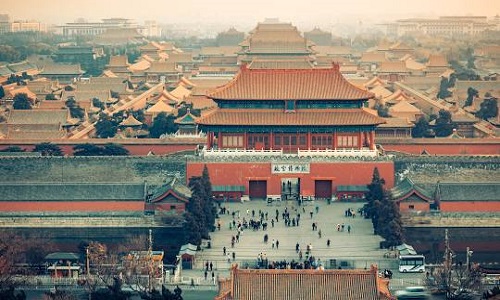
The safety of American travelers in China is often a top concern, but China is generally considered a safe country to visit, with low rates of violent crime compared to many other international destinations. Like any travel destination, there are always safety considerations, and it’s important to remain vigilant, especially in crowded areas where petty crimes like pickpocketing can occur. However, violent crime is relatively rare. That said, there are some unique factors and cultural nuances to keep in mind. China has strict laws and regulations, particularly regarding public behavior, political discussions, and online activity, so it's important for visitors to respect local customs and be mindful of these differences. By understanding the cultural context and taking basic precautions, American travelers can enjoy a safe and enriching experience in China.
1. Safety Levels in Major Cities
Let’s talk about the cities, because that’s where most visitors head first. Beijing, Shanghai, Xi’an, and Chengdu are popular spots, and guess what? They're known for having low crime rates. These bustling metropolises have a visible security presence, especially in tourist-heavy spots like the Great Wall, Forbidden City, and West Lake. Violent crime against foreigners? Almost unheard of. But just like in any major city, there are occasional pickpockets in crowded places like subway stations or popular markets. The good news is it’s easy to avoid—just keep your wallet or phone close, and don’t flash any valuables around. Your camera might be shiny and new, but your bag is better kept zipped up!
2. Understanding Local Regulations
Alright, this is important, so let’s dive in. Every country has its quirks, and China is no different. Laws and cultural norms here can be very different from what you’re used to back home. For example, protests or any kind of political demonstration? Not happening. Online freedom? Well, China’s internet is more like a gated community, with certain sites and social media platforms heavily monitored and blocked (bye-bye Facebook, hello WeChat!). So, while you're snapping your photos of the Terracotta Warriors, it’s probably not the best idea to vent about politics online. The bottom line: respect the local rules, keep a low profile, and you’ll be just fine.
3. Health and Medical Services
When it comes to health, China’s big cities have excellent healthcare facilities—so if you’re in places like Beijing or Shanghai, you’ve got access to top-notch medical care. But if you’re planning to explore off-the-beaten-path areas, like the Gobi Desert or Tibet, don’t assume the healthcare is on the same level. Rural areas may not have the same medical infrastructure, so it's super important to carry any meds you might need and make sure your travel insurance covers medical care abroad.
little tip: the tap water in China? It’s best to skip it unless it's bottled—better safe than sorry!
4. Public Health and Hygiene
Now, when it comes to food and water, China has definitely made great strides in public health, but if you're not used to the local environment, it’s a good idea to take a few basic precautions. Street food in China is famous (and delicious!), but as tempting as it is to grab a skewered meat from a street vendor, make sure you’re buying from a reputable stall. Trust us, your stomach will thank you later. If you're heading to more remote regions, it’s a good idea to check out the air quality and be aware of any seasonal diseases. Some areas can have a bit of pollution, so if you're sensitive, pack a mask. And as always, hydration is key—but make sure it's bottled water!
In Summary
In short, China is generally a safe destination for Americans, but a little prep goes a long way. Stick to the touristy areas, respect the local laws, and take standard health precautions, and you’ll be fine. So, go ahead and plan your dream trip—whether it’s soaking in the cultural wonders of Beijing or exploring the wild beauty of Zhangjiajie—the adventure is waiting, and it's ready for you to enjoy!
Do Americans Need a Visa for China?
So, you’re ready to visit China—but before you start packing your bags, there's one important step to take care of: getting a visa. Yep, Americans do need one to travel to China, but don’t worry—it’s not as complicated as it sounds. The type of visa you’ll need depends on what you’re doing—tourism, business, study, or something else. For most travelers, the Tourist Visa (L visa) is the one you’ll be applying for.
1. Visa Application Process: Here’s How It Works
Applying for your visa is pretty straightforward, but you’ll need to gather a few things first:
1. A valid passport: Make sure it’s good for at least 6 months beyond your travel dates (just to be safe).
2. Passport-sized photos: Get a couple of those classic passport pics taken—easy peasy.
3. Flight itinerary: Show them you’ve got your flights sorted with your entry and exit dates.
4. Hotel reservations or an invitation letter: You’ll need to either book a hotel in advance or, if you're staying with a friend, get an invitation letter from them.
5. Proof of financial means: Basically, they want to make sure you can afford your trip. So, bring some bank statements to show you're financially set.
2. Processing Time and Cost
Once you’ve submitted all the documents, expect the visa processing to take 4 to 7 business days. If you’re in a rush, some services can speed it up for a little extra cash. As for the cost, it depends on how many entries you need and how long you plan to stay. Generally, it ranges from $140 to $180. Not bad for a visa to explore a whole new world, right?
3. Visa Extensions: Need More Time?
The L visa gives you a stay of up to 30 days in China. But what if you fall in love with the food, the culture, or just can’t get enough of the Great Wall? Good news: you can sometimes extend your visa while you’re in China. Extensions aren’t always guaranteed, though, so it’s a good idea to apply before your initial visa expires. Better safe than sorry!
So, get that visa sorted, and then you’re all set to have the adventure of a lifetime in China!
What Is the Best Time to Visit China?
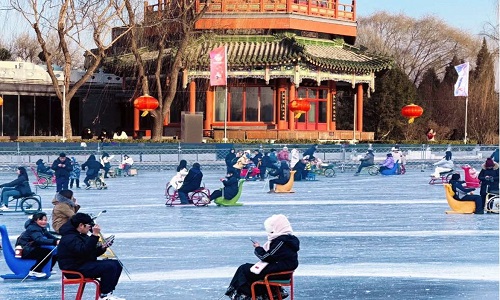

China’s massive size means it’s got pretty much every type of weather you can imagine. So, when’s the best time to go? Well, that really depends on what you’re looking for. Here’s the lowdown:
1. Spring (March to May): The Land Comes to Life
If you love seeing nature wake up after a long winter, spring is the perfect time to visit China. The weather is mild, flowers are in bloom, and the air is fresh—think crisp mornings and sunny afternoons. Beijing and Xi'an are prime spots for sightseeing during this time, especially if you’re keen on visiting iconic sites like the Forbidden City or the Terracotta Army. Spring also brings a bunch of traditional Chinese festivals, like Tomb Sweeping Day and Qingming Festival, where you’ll see locals paying tribute to their ancestors and visiting historical spots.
2. Summer (June to August): Peak Travel Season
Summer in China? Prepare for heat! The southern and central parts of the country can get super hot and humid, but this is also the time when the crowds come out in full force—especially in cities like Beijing and Shanghai. If you're not into sweating your way through a crowd, consider heading to cooler places like Tibet or Harbin in the north, where the weather’s more bearable and the festivals are in full swing.
3. Autumn (September to November): Ideal for Sightseeing
Hands down, autumn is often considered the best time to visit China. The weather is perfect—cool, crisp, and comfortable—and the fall foliage is next level gorgeous. Think golden leaves framing the Great Wall or the mountains around Beijing turning fiery red and orange. Plus, there’s Chinese National Day in October, where celebrations are huge, but be warned—it’s also one of the busiest times to travel as locals take their vacations. If you don’t mind the crowds, it’s a fantastic time to explore.
4. Winter (December to February): A Wonderland of Snow and Ice
If you're not afraid of the cold, winter can be a magical time to visit China. It's the off-peak season, so expect fewer crowds and lower prices. But pack your warmest clothes, because temperatures in the north can dip pretty low. Harbin’s Ice and Snow Festival, with its stunning ice sculptures and winter wonderland vibe, is a must-see during the chilly months. If you’re up for a snowy adventure, this is your time to shine!
So, whether you want to enjoy pleasant spring blooms or embrace the winter chill with ice sculptures, there’s a perfect time to visit China for everyone!
How to Respect Chinese Culture and History
.jpg)
.jpg)
China’s culture is like a treasure chest filled with wisdom, traditions, and epic stories. Whether it’s the philosophy of Confucius or the art of tea ceremonies, there's a whole world to discover. So, how do you show that you truly get it when you visit? Let’s break it down with some fun, easy tips!
1. Visiting Cultural Sites with Respect
China is like a history buff’s dream, with landmarks like the Great Wall, the Forbidden City, the Temple of Heaven, and the Terracotta Army—places that make you feel like you’ve stepped into a history book. But here’s the deal: these sites aren’t just tourist stops—they’re the heartbeat of the past. When you visit, treat them like sacred ground. So, maybe don’t yell across the temple courtyard like you're at a rock concert! Keep it quiet, soak in the culture, and let the ancient vibes do their thing.
2. Respecting Local Traditions
When it comes to eating in China, there’s a little unwritten rule: the elders always start first. So, no matter how hungry you are, hold off until the older folks dig in. It’s a sign of respect, and trust me, they’ll notice the gesture. And while we’re talking respect, here’s a fun one: when you give someone a gift, always do it with both hands. No, it's not just to show off your ninja-like coordination—it’s a sign of respect and thoughtfulness.
Another must-know?
Tea. Offering tea to guests isn’t just a tradition, it’s practically a rite of passage. So, if you’re invited to a home or a traditional tea ceremony, be sure to pour that tea with grace (and maybe learn how to not spill it while you're at it!).
3. Language and Communication
Okay, we get it—learning a new language can be daunting. But here's the thing: even if you can’t speak perfect Mandarin, locals will be so impressed if you try. Start small with a (ni hao, "hello") or (xièxiè, "thank you")—it’s like showing up to a party with a great appetizer. It's just a few words, but they’ll show you respect the culture, and that can go a long way in creating friendly vibes with the locals.
4. Cultural Etiquette in Public Spaces
In China, public behavior can be a little different than in the West. For example, you might spot someone casually spitting in public—don’t freak out, it’s just part of the culture! Personal space? Let’s just say it’s a bit more… flexible. It’s nothing personal, it’s just how things roll here. But here’s a pro tip: if you're ever in a public place, keep your voice down. China’s all about maintaining harmony—people enjoy calm, polite conversations over shouting matches.
Exploring Chinese Cuisine: A Feast for the Senses
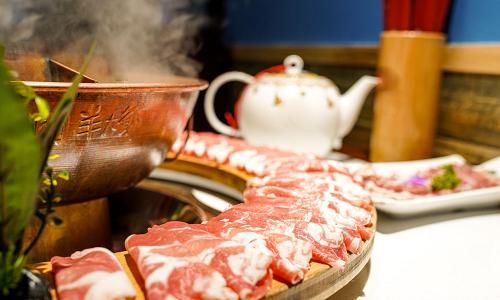
.jpg)
Let’s be real—no trip to China is complete without diving into its world-renowned cuisine. From bustling street food stalls to elegant banquets, Chinese food is a true feast for your senses. And here’s the fun part: each region has its own distinct culinary personality. So, whether you're a hardcore foodie or just someone looking to taste something different, China’s got you covered. Ready to eat your way through the country? Let’s go!
1. Must-Try Dishes
1. Peking Duck: The quintessential Beijing dish, Peking Duck is nothing short of a culinary masterpiece. Imagine crispy, crackling skin, tender meat, and a sweet hoisin sauce wrapped up in a soft pancake. It’s like a bite of Beijing’s history in every mouthful. Don’t even think about leaving without trying it!
2. Dim Sum: Let’s face it—Dim Sum is one of the best food experiences you’ll have in China. Tiny, delicious bite-sized dishes, often served with tea. From dumplings to buns to egg tarts, each bite is a little burst of joy. And the best part? It’s meant for sharing (or not, depending on how much you love dumplings). So, get ready for some serious food envy when your table fills up with all the tasty goodies!3. Flight itinerary: Show them you’ve got your flights sorted with your entry and exit dates.
4. Hotpot: Imagine sitting around a steaming pot of broth, where you get to cook your own meat, vegetables, and noodles right at the table. It’s interactive dining at its best. Hotpot is especially popular in Sichuan, where it’s famous for its fiery spices and numbing peppercorns. Warning: You might get hooked on the spicy, mouth-numbing goodness. And who could blame you?
2. Regional Variations
China isn’t just one big food court—it’s a universe of flavors! From the sizzling, spicy heat of Sichuan to the delicate, balanced tastes of Cantonese cooking, every region has its own vibe. But let’s not stop there—China boasts eight major culinary traditions, often referred to as the “Eight Great Cuisines” or the “Top 10 Chinese Cuisines.” Here’s a quick guide to these flavor-packed regions:
1. Sichuan: Think bold, fiery spices that will make your mouth tingle and your forehead sweat. Sichuan peppercorns are the magic ingredient that create that numbing, tingling sensation. It’s a flavor adventure like no other, so get ready to embrace the heat!
2. Cantonese: If you’re after something a bit more subtle, Cantonese cuisine has you covered. This region is known for its light, fresh flavors, often featuring seafood and delicate broths. The focus is on balance, and every dish has its own wow factor—so expect some real surprises!
3. Shandong: Known for its rich, hearty flavors, Shandong cuisine features dishes with lots of sauces, broths, and seafood. The region is famous for using vinegar to add tangy depth to many dishes, making it a perfect combination of boldness and balance.
4. Jiangsu: If you’re into elegant and refined cuisine, then Jiangsu is where it’s at. Known for its freshness, light flavors, and sweeter broths, this region’s food is as visually beautiful as it is delicious. Expect dishes like braised pork and sweet and sour fish.
5. Zhejiang: Imagine fresh, delicate seafood paired with sweet, savory flavors. Zhejiang food is all about the seasonality of ingredients, with fish and bamboo shoots often taking center stage. Light, but flavorful—just the way we like it!
6. Fujian: This cuisine is umami heaven, featuring lots of broths, seafood, and pickled vegetables. Fujian dishes often have a slight sweetness and use unique ingredients like star anise and sugar to create rich, deep flavors.
7. Hunan: If you like it spicy, Hunan will be your paradise. Known for using chili peppers and garlic liberally, Hunan food will have your taste buds dancing. It’s bold, punchy, and packs a punch.
8. Anhui: Anhui cuisine is all about stews and slow-cooked meats, often using wild herbs and local ingredients from the region’s mountains. It’s hearty and rustic—perfect for a long, leisurely meal with family.
9. Xinjiang: In Xinjiang, food is influenced by the Silk Road and Central Asia, meaning you’ll find plenty of lamb, flatbreads, and spicy kebabs. It’s rich, flavorful, and packed with the flavors of the ancient trade routes.
10. Guangxi: Guangxi is famous for its rice noodles, spicy stews, and dishes that focus on the balance between sour, sweet, and spicy. This cuisine is as vibrant and diverse as the region itself.
Traveling to China: Practical Tips for American Tourists
.jpg)
.jpg)
Ready to pack your bags and head to China? Awesome! While you’ll be immersed in China’s rich history and vibrant culture, here are a few practical tips to make your trip smoother, whether you're hopping on a subway in Beijing or riding a high-speed train to Shanghai. Let’s dive in!
1. Public Transportation in China: Your Ticket to Adventure
China’s public transportation is basically the backbone of its major cities. And guess what? It’s super easy to use. The subways in cities like Beijing and Shanghai are clean, modern, and affordable—think New York subway meets high-tech efficiency. Want to make your travel even easier? Pick up a transportation card like the Beijing Yikatong Card. It’ll let you zip around on buses, subways, and even some taxis without needing to dig for loose change in your bag.
If you’re traveling long distances, get yourself a high-speed train ticket. These trains are seriously next-level—fast, comfortable, and smooth. Hop on the Beijing-to-Shanghai bullet train and you’ll be zooming across China’s vast landscape like a VIP. And don’t worry about sitting in the back of the bus—first-class cabins are available if you want to travel like royalty.
2. Money Matters: Paying Like a Local
Ah, money. It’s always good to have a little local currency (RMB) on hand, especially when you first land in China. While credit cards are widely accepted in cities like Beijing or Shanghai, some smaller cities and rural areas might still prefer cash.
But here’s the real game-changer: mobile payments. Forget about carrying cash around—just grab your phone and pay with WeChat Pay or Alipay. It’s as easy as sending a text. Grab a bite at a street food stall, hop on the subway, or even pay for a taxi ride using these apps. Setting them up can be a little tricky, but it’s worth it once you get the hang of it. (Bonus points if you can impress a local with your mad WeChat skills!)
3. Staying Connected: How to Stay in the Loop
Now, let’s talk Wi-Fi. While China has the most advanced technology, it also comes with a little catch: lots of popular websites and social media apps (hello, Facebook, Google, and Instagram) are blocked. So how do you keep in touch with your friends, post those amazing Great Wall selfies, or check your emails? You’ll need a VPN (Virtual Private Network).
A VPN helps you sidestep China’s internet restrictions and surf the web like a local. But here’s the thing: not all VPNs are created equal. Some are a bit dodgy, and a few aren’t even legal in China. So, be sure to do your homework and choose a reliable one before you go. You’ll thank yourself later when you’re able to keep up with the world (and your family back home).
Understanding Chinese Philosophy and Traditions
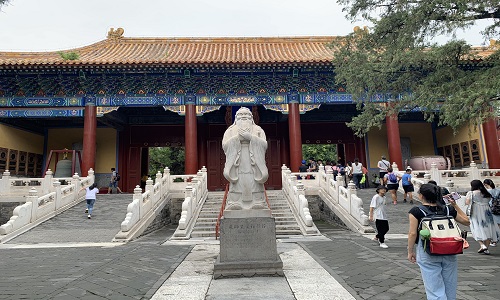

China’s identity isn’t just shaped by dynasties and emperors—it’s deeply rooted in ancient philosophies and traditions that still influence life today. From Confucianism to Taoism to Buddhism, these teachings go beyond textbooks; they’ve shaped the way people live, think, and even drink tea. Let’s take a journey through China’s mind—and soul!
1. Confucianism: Harmony and Respect
First up: Confucianism—the philosophy that’s been running the show in China for over 2,500 years. Founded by the wise philosopher Confucius during the Zhou Dynasty, Confucianism is all about harmony, respect for authority, and family values. These principles are still the backbone of Chinese society today, influencing everything from how people treat their elders to the structure of relationships.
So, what does this mean for you as a traveler? Well, understanding Confucianism helps you appreciate why respect is such a big deal in China. Whether it’s respecting elders, deferring to authority, or showing politeness in conversations, you’ll see Confucian principles in action everywhere. So, when in doubt, show a little extra courtesy—it’s the Chinese way!
2. Taoism: The Flow of Life
Next, we’ve got Taoism, a philosophy that’s all about going with the flow—literally. It’s based on living in harmony with the Tao, or the natural way of the universe. Taoism isn’t just about abstract thinking; it’s also about balance. Think of it like finding your inner Zen—whether it’s through Tai Chi, Qigong, or just meditation.
If you’re traveling to China, you might notice Taoist practices popping up at temples or wellness centers. Want to feel like you’re in tune with the universe? Try a Tai Chi class in a park, or visit a Taoist temple for a bit of peaceful reflection. You’ll not only get some exercise, but you’ll also tap into a tradition that’s been around for centuries.
3. Buddhism: Peace and Reflection
Then, there’s Buddhism, a philosophy that’s not just about enlightenment, but about inner peace and compassion. It came to China from India, and over time, it evolved into Chan Buddhism, which later became Zen Buddhism in Japan. Buddhism is all about meditation, mindfulness, and finding peace within yourself.
China is home to some of the world’s most serene Buddhist temples, monasteries, and shrines. Whether you’re visiting the Shaolin Temple, where monks practice martial arts and meditation, or wandering through the Dunhuang caves, which are filled with ancient Buddhist murals, you’ll see how deeply Buddhism influences China’s spiritual landscape.
4. Tea Culture: Sip, Reflect, Repeat
Now, let’s talk about tea—a little cup of wisdom. Tea isn’t just a drink in China; it’s a way of life. The Chinese have been drinking tea for over 4,000 years, and the art of tea-making is intertwined with the philosophy of mindfulness and aesthetic appreciation. From green tea to oolong to the earthy richness of pu-erh, tea is more than just a refreshment—it’s a ritual.
One of the best ways to immerse yourself in China’s culture is by visiting a traditional tea house. Don’t just sip your tea—experience the process! The Chinese tea ceremony is about slowing down, appreciating the delicate flavors, and being present in the moment. It’s like hitting reset for your mind. So, if you find yourself in a tea house, take a deep breath, relax, and enjoy the ancient tradition in the most authentic way possible.
Navigating China’s Diverse Regions and Natural Wonders
.jpg)
.jpg)
China is a land of extremes, from the soaring peaks of the Himalayas to the lush, emerald rice terraces of Yunnan. Whether you're looking for an adrenaline-pumping adventure or just need a peaceful getaway in nature, China offers a spectacular range of landscapes and natural wonders. Ready to explore? Let’s dive into some of the most breathtaking regions in China!
1. The Majestic Himalayas and Tibet: The Roof of the World
Ever wanted to stand on top of the world? Tibet, known as the “Roof of the World,” offers one of the most spiritual and awe-inspiring landscapes you’ll ever experience. With its towering mountain ranges, expansive plateaus, and serene lakes like Lake Namtso, Tibet feels like a land untouched by time.
The capital, Lhasa, is the heart of Tibetan Buddhism and home to the iconic Potala Palace, which was once the residence of the Dalai Lama. Here, you'll encounter centuries-old temples, colorful prayer flags fluttering in the wind, and the chance to immerse yourself in Tibetan culture and spiritual practices.
Tibet is extra special, though—travels here require special permits, and it's best to go with an organized tour group. But trust us, the breathtaking views and unique experiences are worth the extra planning!
2. The Karst Landscapes of Guilin and Yangshuo: A Painter’s Paradise
For anyone looking to immerse themselves in nature, Guilin and Yangshuo are a photographer's dream come true. The area’s towering limestone peaks, winding rivers, and misty landscapes have inspired poets and artists for centuries. Cruising along the Li River, you’ll pass iconic formations like Elephant Trunk Hill and Reed Flute Cave—each more surreal than the last.
Want to get even closer to nature? Head to Yangshuo, where you can bike through rolling hills, explore traditional villages, and simply disconnect from the hustle and bustle of modern life. If you’re looking for peace, serenity, and a camera full of beautiful memories, this is the place to be.
3. The Deserts of Inner Mongolia: A Wild and Remote Frontier
Looking for a more rugged adventure? Then Inner Mongolia is calling your name! Home to the vast Gobi Desert, this region is as wild and mysterious as they come. While it might seem desolate, Inner Mongolia is full of life—whether it’s the ancient Buddhist monasteries or the nomadic herders who still roam the land just as their ancestors did.
If you love winter sports, Inner Mongolia is a hidden gem for skiing and snowboarding. With fewer crowds than China’s more well-known resorts, you’ll have the slopes pretty much to yourself.
If you’re into adventure, history, and unique cultural experiences, Inner Mongolia should be on your bucket list!
4. The Rice Terraces of Longsheng: A Perfect Landscape of Harmony
Get ready to be wowed by the Longji Rice Terraces (also known as the Dragon’s Backbone) in the Longsheng region of China. These stunning terraces were carved into the mountains by the Zhuang and Yao peoples over 650 years ago, and the result is a living masterpiece of human ingenuity and nature’s beauty.
Trekking through these terraces is an unforgettable experience, especially during the planting season when the fields fill with water and create mirror-like reflections of the surrounding mountains. Along the way, you’ll get a taste of traditional rural life in China and learn about the cultures of the minority groups that call this place home.
The rice terraces aren’t just a feast for the eyes—they offer a deeper connection to China’s ancient agricultural roots and a chance to experience something truly unique.
Chinese Festivals: A Window Into the Soul of the Culture
.jpg)
.jpg)
China’s festivals aren’t just dates on a calendar—they are the heartbeat of the country, each one a vibrant celebration of tradition, culture, and community. Imagine yourself stepping into a festival, surrounded by colorful parades, delicious smells, and people filled with joy. Let’s take a look at some of the most exciting and unforgettable festivals from a visitor’s perspective!
1. Chinese New Year (Spring Festival): A Celebration Like No Other
If you’ve ever dreamed of experiencing a New Year’s celebration that’s full of fireworks, lanterns, and family reunions, Chinese New Year is the ultimate way to start your journey in China. This isn’t just a holiday—it’s a multi-day extravaganza where every street is alive with red decorations, dragon dances, and the rhythmic sound of firecrackers filling the air.
As a visitor, you’ll be immersed in the magic of it all. Just picture yourself wandering through Beijing’s Hutongs (traditional alleyways), where families invite you to join in the celebrations, offering you traditional treats like dumplings and sweet rice cakes. Despite the excitement, it’s also a time for reflection, making it a wonderful opportunity to experience Chinese culture in its most authentic form.
But, note to travelers: during the holiday, some places will be quieter than usual—hotels and restaurants might be fully booked, and popular attractions could be closed, as locals return home to celebrate with their families. But don’t let that scare you! With a little planning and advance bookings, you’ll get to experience China’s biggest festival at its best!
2. Mid-Autumn Festival: The Perfect Family Gathering with Mooncakes
Who wouldn’t want to be part of a festival that’s all about family, good food, and a beautiful moon? The Mid-Autumn Festival is an ideal time to be in China, especially if you’re a traveler wanting to dive into Chinese traditions. This is a festival that focuses on reuniting with loved ones, and what better way to experience that than by sharing a mooncake (or two) with new friends you meet during your trip?
In cities like Shanghai and Xi’an, you'll see streets illuminated with colorful lanterns, creating an atmosphere that feels like something out of a fairy tale. You can join in the fun by enjoying traditional lantern displays or even releasing your own lantern into the sky, making a wish and watching it float into the night. If you’re lucky, you might even be invited to join a local family for dinner, where you’ll taste a variety of traditional dishes and experience true Chinese hospitality.
3. Dragon Boat Festival: A Thrill-Seeker’s Dream
If you want to add some adventure to your trip, the Dragon Boat Festival is where you’ll want to be. Imagine standing on the edge of a river, surrounded by crowds of cheering locals, as brightly colored dragon boats race through the water, powered by teams of athletes paddling in perfect unison. The air is electric with drums, chants, and the excitement of the race.
But it’s not all about watching—get involved! In cities like Hangzhou and Guangzhou, you can watch the intense races up close and even join the festivities by tasting traditional zongzi (sticky rice wrapped in bamboo leaves). These little dumplings come in a variety of fillings—sweet or savory, and they’re a perfect way to fuel up between races!
The Dragon Boat Festival is an adrenaline-packed cultural experience that will have you feeling the pulse of China.
4. Lantern Festival: A Night of Light and Wishes
The Lantern Festival is the cherry on top of the Chinese New Year celebrations. The 15th day of the lunar new year is the grand finale, and it’s when China truly shines—literally! Imagine strolling through streets filled with glowing lanterns, fireworks lighting up the sky, and families walking together, admiring the full moon. It’s a romantic, magical atmosphere that you can’t find anywhere else in the world.
In Pingxi, a small town known for its lantern traditions, you’ll have the chance to release your own sky lantern, carrying your wishes and hopes for the year into the sky. It’s a deeply personal and symbolic moment, one that you’ll remember long after your trip. Plus, you’ll get some amazing photos to take home!
Shopping in China: From Ancient Markets to Modern Malls
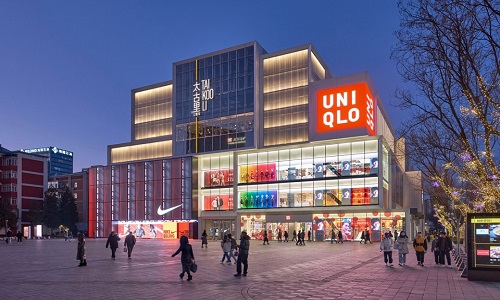
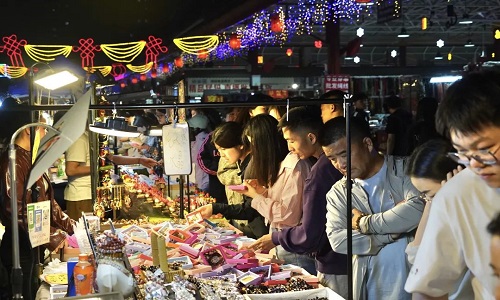
If you’re a shopaholic or simply looking to take a piece of China home with you, get ready to be amazed. China’s shopping scene is a perfect blend of ancient traditions and cutting-edge modernity. Whether you want to haggle for a bargain in ancient markets or indulge in a luxurious shopping spree at glitzy malls, China has something for everyone. Here’s your ultimate shopping guide, so you can make the most out of your trip and bring home some incredible finds!
1. Traditional Markets and Street Shopping: Where History Meets Haggling
Want to experience the thrill of finding a hidden gem while soaking up the local culture? Head straight to China’s bustling markets. These markets are not just places to shop; they’re vibrant hubs of local life. Picture this: the lively hum of bargaining, the scent of incense filling the air, and a sea of unique products around you.
1. Silk Market (Beijing): Want to take home a silk scarf or a beautiful silk dress? The Silk Market is your go-to spot. This massive shopping complex offers a huge selection of silk products, including scarves, garments, and even silk-covered notebooks. Don’t forget to negotiate! Haggling is part of the fun, and you might end up with a better deal than you expected.
2. Yuyuan Bazaar (Shanghai): If you’re in Shanghai, the Yuyuan Bazaar offers an authentic Chinese shopping experience. This market is filled with traditional items like jade jewelry, wood carvings, and porcelain tea sets. It’s the perfect spot to grab a souvenir that’s steeped in tradition.
3. Antique Street (Xi'an): For history lovers, Xi'an's Antique Street is a must-see. This area is lined with antique shops selling everything from old coins and porcelain vases to calligraphy brushes. Take a walk through these stalls and feel like you’ve stepped back in time.
2. Luxury and Modern Malls: Shop Like a Star
China’s major cities are also home to luxurious malls and shopping streets, perfect for those who want to indulge in high-end brands or just enjoy a chic shopping spree.
1. Nanjing Road (Shanghai): One of the most famous shopping streets in the world, Nanjing Road is home to top-tier malls and international brands like Gucci, Louis Vuitton, and Chanel. Whether you’re window-shopping or splurging on something special, the street is always a great choice for those who enjoy an upscale shopping experience.
2. Wangfujing Street (Beijing): In the heart of Beijing, Wangfujing Street is another shopping paradise. Here you’ll find luxury brands, international chains, and department stores offering everything from cosmetics to fashion. If you’re looking for something different, head to one of the many snack stalls for some street food—think candied fruit and scorpions on sticks!
3. Sanlitun (Beijing): This trendy area in Beijing offers fashion-forward boutiques and stylish cafes, perfect for a shopping trip with a side of people-watching. You'll find everything from luxury boutiques to chill pop-up shops, so it’s an ideal destination if you’re looking to blend shopping with a bit of the local scene.
3. Unique Chinese Products: Souvenirs with Soul
When it comes to shopping in China, you can’t leave without picking up something truly unique. Here’s a quick guide to some of the country’s most iconic products:
1. Tea Sets: China is the birthplace of tea, and its tea culture is one of the oldest and most profound in the world. You’ll find stunning tea sets—many beautifully crafted from porcelain—that make perfect gifts or souvenirs. Don’t forget to buy some tea to go with your set. From green tea to the strong and earthy pu-erh tea, you’ll be spoilt for choice.
2. Chinese Calligraphy Brushes: Want to try your hand at some ancient art? Chinese calligraphy brushes are both practical and beautiful. You can find them in markets and art shops, often paired with ink sticks and rice paper, allowing you to practice the art of writing Chinese characters.
3. Jade Jewelry: Known as the “stone of heaven” in Chinese culture, jade is a symbol of good fortune, beauty, and longevity. Whether it’s a pendant, bracelet, or ring, jade jewelry makes for a timeless souvenir. Don’t be afraid to ask questions about the origin and quality of the jade before making a purchase.
4. Porcelain Figurines and Decor: Looking for something to adorn your home? Chinese porcelain is renowned worldwide for its craftsmanship and beauty. You can find everything from vases to figurines painted with traditional designs, perfect for adding a bit of Chinese elegance to your living space.
Pro Tip: Embrace the Art of Bargaining!
One of the most exciting parts of shopping in China, especially in the traditional markets, is the bargaining process. Don’t be shy! Start by offering half of the asking price, and go back and forth until you find a fair deal. It’s all part of the fun, and you’ll leave feeling like a savvy shopper who just scored a deal.
Chinese Architecture: A Testament to History and Innovation
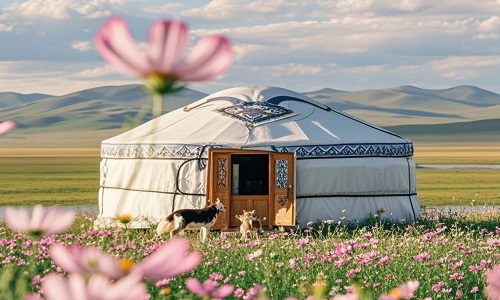
.jpg)
China's architecture is a fascinating blend of ancient traditions and cutting-edge modernity. From the imperial palaces in the east to the majestic pagodas in the west, every region tells a different story through its architecture. Let’s take a tour through the country’s architectural marvels from north to south, east to west, and see how history and innovation come together in surprising ways.
1. Ancient Architecture: Where History and Spirituality Meet
Let’s start with the grand palaces and temples that speak to China’s imperial legacy. In the north, the Mongolian yurts stand as symbols of ancient nomadic life. These portable, circular tents, used by the Mongolian people, reflect the country’s deep connection with the land and their need for mobility in the vast grasslands. While a yurt may seem simple, its structure is a perfect blend of form and function, keeping warmth in the winter and coolness in the summer. It’s like the epitome of sustainability in architecture!
Moving to the south, you’ll find the classic elegance of Jiangnan gardens. These beautiful gardens in cities like Suzhou are designed to be a paradise on earth. Picture delicate pavilions with curved eaves, rockeries, koi-filled ponds, and weeping willows hanging over peaceful pathways. These gardens were built not just for leisure, but to capture the essence of nature, combining symmetry and spontaneity, just like a painting coming to life. The garden's flying eaves and sloping roofs are designed to evoke a sense of elegance and serenity—a perfect reflection of the refined culture of Jiangnan.
Heading west, the Mogao Caves in Dunhuang showcase Buddhist art and architecture dating back to the Tang Dynasty. But what about the everyday structures of this region? Northwestern China’s loess plateau is famous for its cave dwellings, known as yaodongs. These caves are carved into the side of mountains, using the earth as insulation to keep cool in summer and warm in winter. These homes are an impressive feat of earth architecture that have been used for thousands of years in this arid region. They may look simple, but they are an ingenious way to adapt to the harsh desert climate.
In Xi'an, we’ve already mentioned the Giant Wild Goose Pagoda, but if you travel further north to Inner Mongolia, you’ll come across Mongolian yurts and ancient Buddhist temples. The vast, open space of Inner Mongolia is home to a rich nomadic culture, and the yurts are still a symbol of this unique way of life, designed to be assembled and disassembled on the move. Imagine waking up in the middle of the Gobi Desert, surrounded by nothing but the wide, open sky and a structure that has stood the test of time.
2. Modern Marvels: China’s Skyline is Looking Better Than Ever
Of course, the story doesn’t stop with ancient architecture—China’s modern architecture is nothing short of spectacular, with cities across the country leading the way in innovation. Shanghai stands at the forefront with its gleaming glass towers. The Shanghai Tower, with its unique twisting design, is a perfect symbol of China's fast-paced modernity. It’s the tallest building in China and the second tallest in the world—so, you’re definitely going to want to snap a photo or two!
However, it’s not just the big cities in the east that are pushing the envelope. Shenzhen, known as China’s Silicon Valley, is home to some of the most cutting-edge architecture in the country. The Ping An Finance Center, one of the tallest buildings in the world, stands as a testament to China’s rapid growth and technological advancement. It’s in cities like Shenzhen that you’ll see how fast China is moving into the future.
But China’s architectural diversity doesn’t end in the east. The west is just as innovative! In Lhasa, the Potala Palace is a masterpiece of Tibetan architecture. Perched on a hill, this iconic structure looks like it’s floating in the sky—perfectly embodying the Buddhist ideal of spiritual enlightenment. And though the Potala Palace is ancient, modern buildings in Tibet have adapted traditional Tibetan designs with a contemporary twist, integrating local materials with global architectural styles.
3. A Beautiful Mix of Old and New
From the flying eaves of Jiangnan’s gardens to the modern marvels of Shanghai, China’s architecture offers a rich and diverse palette that will captivate any traveler. Whether it’s the ancient loess caves of the north, the nomadic yurts of the Mongolian plateau, or the futuristic towers of Shenzhen, the country’s buildings are a beautiful blend of history, innovation, and regional diversity.
So next time you visit China, take a moment to appreciate the incredible architecture. From historical treasures to modern landmarks, every structure tells a unique story of China’s cultural evolution. Don’t just admire the buildings—imagine the people who’ve lived, worked, and worshipped in them for centuries, and think about the future that’s being built right before your eyes. China is a country where the past and future exist side by side, and that’s something worth celebrating.
Chinese Calligraphy: An Artistic Expression of Culture

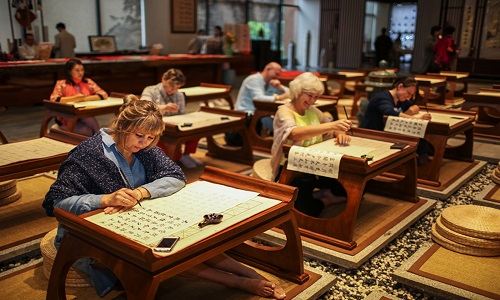
You know what they say: "The pen is mightier than the sword." In China, the brush has been wielded as a tool of power, philosophy, and beauty for over 2,000 years. Chinese calligraphy isn’t just about writing; it’s an expression of one's soul. The brush strokes are a dance of strength and grace, slow and fast, soft and sharp—almost like a visual meditation.
Fancy giving it a try?
You’ll find that many cultural centers offer calligraphy workshops where you can take the brush into your own hands and make your own masterpiece. Trust me, you’ll feel like a true artist—and it’s not as easy as it looks! But when you’ve nailed your first few strokes, you’ll have a deeper appreciation for this ancient art form. Plus, you can even take home a beautiful scroll with your name written in stunning Chinese characters. Not a bad souvenir, right?
Traditional Chinese Medicine: A Holistic Approach to Health


Alright, let’s be real—after all that food, shopping, and sightseeing, you might feel like your body needs a little TLC. That’s where Traditional Chinese Medicine (TCM) comes in. It’s not just about treating symptoms; it’s about balancing your mind, body, and spirit. Think of it like a wellness retreat, but ancient and full of wisdom.
Want to feel rejuvenated? Step into a TCM clinic, and maybe try some acupuncture (don’t worry, it’s more relaxing than it sounds!) or experience cupping therapy—trust me, it’s a thing here, and it’s oddly therapeutic.
Ever wondered what the secret to ancient Chinese longevity is?
It’s this holistic approach, and you’re just one step away from trying it yourself.
Chinese Spiritual Practices: Exploring Meditation and Wellness
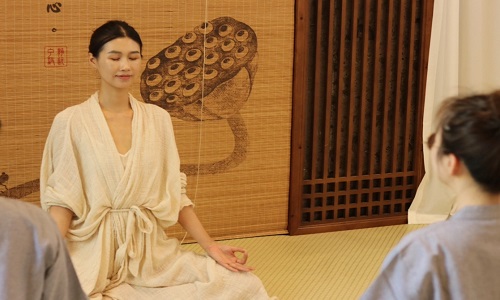

Here’s a little secret: If you really want to connect with the soul of China, you’ve got to get in touch with its spiritual roots. No, it’s not all about temples and incense—it’s about finding inner peace. The Zen of Shaolin or the Taoist tranquility of Wudang Mountain—China offers you more than just sightseeing; it offers you a journey inward.
If you’re feeling the rush of modern life, step into a meditation retreat or embrace the calm of Tai Chi. There’s something magical about slowing down and letting go. Picture this: you’re in a peaceful temple, the only sound is the soft wind and the breath of monks around you. Can you feel the calm already?
Oh, and here’s the kicker—many of these experiences are open to travelers like you! Whether you’re a first-timer or a seasoned wellness junkie, you’ll walk away feeling lighter, refreshed, and maybe even enlightened. So, why not try a few days of Tai Chi in a quiet park or a weekend retreat in the mountains?
The Future of Travel in China: Embracing Innovation and Sustainability
China's future is as bright as its cities, and as green as its countryside. From cutting-edge smart tech to eco-conscious travel experiences, the country is embracing change in the best ways possible.
Picture this: you’re checking into your hotel with your phone (because who needs a key card these days?), paying for lunch with WeChat Pay, and then stepping out to ride an electric bike down the city’s eco-friendly streets. Sustainable travel is the new cool, and China is at the forefront. Whether you’re visiting the stunning Jiuzhaigou Valley or the picturesque Yellow Mountains, China’s preserving its natural beauty with initiatives that help protect these spots for generations to come.
Here’s the fun part: While you’re marveling at all this innovation, you’ll get to experience China’s eco-tourism, too. Ever thought about staying in a cozy eco-lodge made of local, natural materials? In places like Yunnan, you can experience life as it’s meant to be lived—close to nature, sustainable, and oh-so-authentic.
The Spiritual and Cultural Impact of Visiting China
Let’s pause for a second. Why is it that so many people who visit China say it’s a transformative experience? It’s because China invites you into a world that’s rich in history, philosophy, and spirituality. It's not just the Great Wall or the Forbidden City that you’ll remember; it’s the deeper connection you feel to the land, its people, and their wisdom.
Imagine walking through a Buddhist temple, surrounded by the soft scent of incense, while monks chant peacefully in the background. It’s not just a cultural experience; it’s a personal one. Whether you find enlightenment through the teachings of Confucianism or the peaceful stillness of Taoism, China has a way of inviting you to slow down and think about life in a new way.
Travel here isn’t just about the sites—it’s about experiencing the soul of the country, the inner peace of the culture, and the timeless wisdom that shapes daily life. It’s the kind of trip where you don’t just come home with souvenirs, but with something a bit more lasting: a new perspective on the world.
Final Thoughts: China Awaits You
.jpg)
.jpg)
So, are you ready to dive into the adventure of a lifetime? China isn’t just a destination; it’s a journey through time, culture, and modern innovation. Whether you’re wandering through ancient temples, hiking the majestic mountains, or marveling at futuristic skyscrapers, this country offers an experience that engages all your senses. You’ll find yourself lost in the rhythm of the Great Wall, mesmerized by the intricate beauty of Chinese calligraphy, and tasting flavors that will leave you dreaming long after your trip ends. From the bold spices of Sichuan cuisine to the delicate elegance of dim sum, every meal tells a story, every street has a history, and every view takes your breath away.
But it’s not just the sights and flavors that make China unforgettable. This is a country that blends ancient traditions with cutting-edge technology. One moment, you’re stepping into a Buddhist temple, finding peace among the incense and prayers, and the next, you’re exploring the smart cities of Beijing and Shanghai, where technology makes life easier and travel smoother. Whether you’re taking in the serene beauty of the rice terraces in Longsheng or experiencing the thrill of the Dragon Boat Festival, you’ll discover that China's diversity is its strength.
The country’s landscapes are just as varied as its culture—snow-capped mountains in the north, desert dunes in the west, and lush rivers in the south. From the quiet, majestic plains of Tibet to the buzzing energy of the Yangtze River cities, China’s geography and scenery offer endless possibilities for adventure, relaxation, or exploration. Whether you're hiking the karst peaks in Guilin or getting lost in the streets of Xi’an, there’s always something new to experience.
But, what truly makes China special is its ability to make you feel at home, whether you’re walking through an ancient temple or sipping tea in a bustling market. You’re not just visiting—you’re connecting with a place that’s constantly evolving while holding tight to its timeless traditions. So, pack your bags, and get ready to experience a place where innovation and heritage live side by side, where every moment presents a new chapter in a story that's been written for thousands of years.
Now, what are you waiting for? The adventure of a lifetime is just a flight away!
Top Experiences in China for Americans: Everything You Need to Know Recommended by Your Way Holiday
We design private and Tailor-made Beijing Tours customized to your style of travel at affordable local prices. We will provide a private & spacious car and a local professional tour guide with over 5 years guiding experience only work for you or your group. Transport, ticket, and dining (We find the most authentic dishes popular with locals) all we will arrange for you according your requirements. Please check our most popular tours below:
Are the above sample tour programs not suitable for you? Dont worry, our Beijing tours can be tailor-made based on your requirements and budget to create unique Beijing experiences that allow you to interact with the local people and culture. We are Beijing travel experts who know what your guidebook and foreign agencies don't. Our enthusiastic tour expert will promptly reply you in details within 24 hours.
Wechat: Chinaprivatetour
24 Hours Hotline:
+86 137-3541-1378
* Authentic Experiences: Genuine local experiences that immerse you in the true essence of Beijing and beyond.
* Safety First: Highest safety standards with secure activities and reliable transportation.
* Customizable Tours: Flexible itineraries tailored to your interests and needs.
* Local Expertise: In-depth knowledge of Beijing and China, offering exclusive insights.
* Professional Guides: Licensed bilingual guides with over 5 years of experience.
* Comfortable Travel: Experienced drivers and well-maintained vehicles for a smooth journey.
* Sustainable Tourism: Commitment to responsible tourism and supporting local communities.
* Customer-Focused: Personalized service and continuous improvement based on your feedback.
* Free Cancellation: Cancel up to 24 hours before travel for flexibility and peace of mind.
* 24/7 Support: Round-the-clock assistance for any questions or help needed.
1 to 1 tailor-made service from our professional travel advisors for the most sophisticated
Constantly excellent reviews for attraction, hotel and service Competitive price
Local experts provide quality tours Best selected knowledgeable local guides Authentic local restaurants
7*24 hours available to create you a worry-free tour. No Hidden Fees and absolutely no pressure to buy. Secured









Copyright © 2017 Chinabeijingprivatetour.com All rights reserved. 浙ICP备18056007号-2